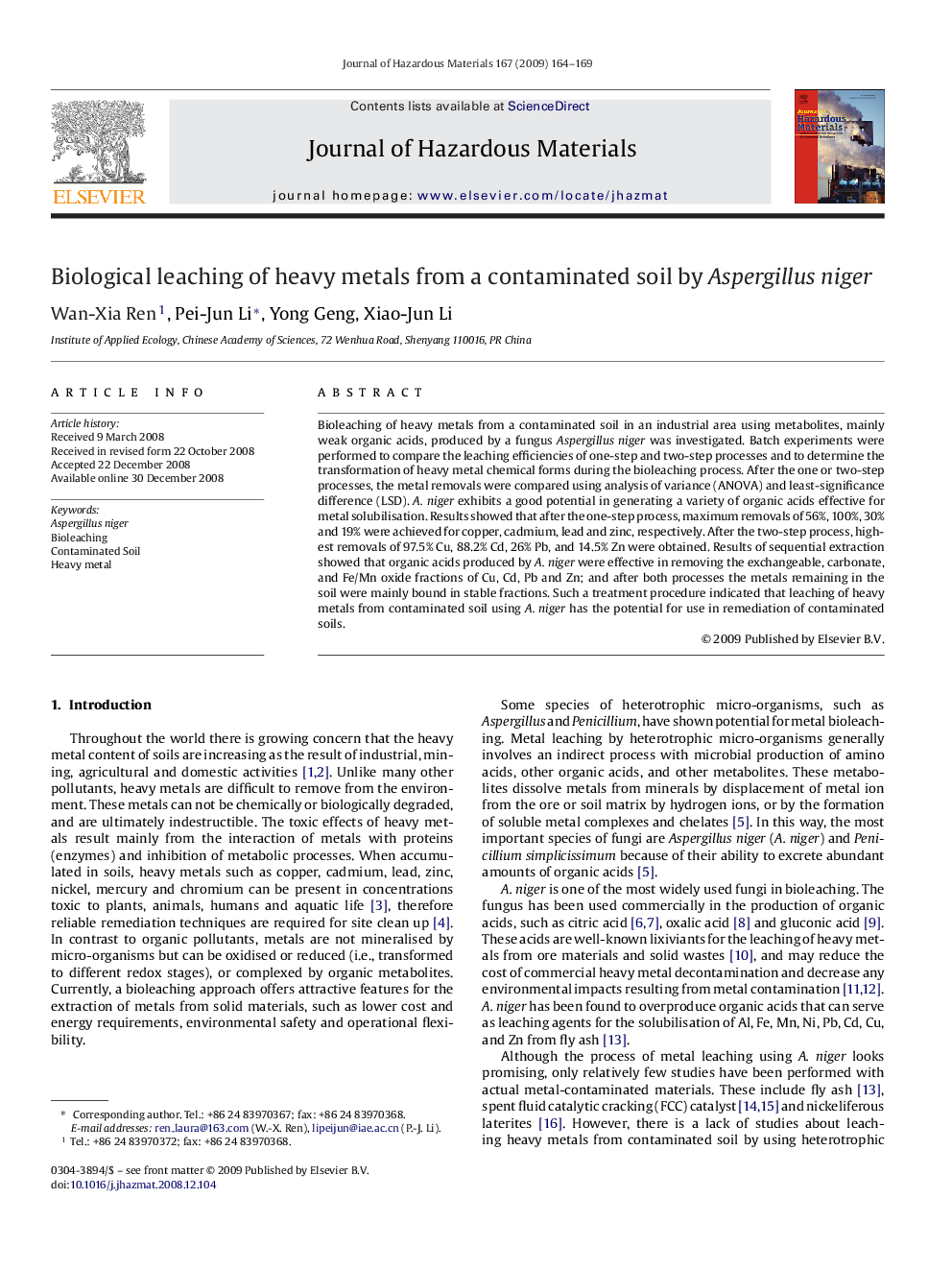| Article ID | Journal | Published Year | Pages | File Type |
|---|---|---|---|---|
| 581762 | Journal of Hazardous Materials | 2009 | 6 Pages |
Abstract
Bioleaching of heavy metals from a contaminated soil in an industrial area using metabolites, mainly weak organic acids, produced by a fungus Aspergillus niger was investigated. Batch experiments were performed to compare the leaching efficiencies of one-step and two-step processes and to determine the transformation of heavy metal chemical forms during the bioleaching process. After the one or two-step processes, the metal removals were compared using analysis of variance (ANOVA) and least-significance difference (LSD). A. niger exhibits a good potential in generating a variety of organic acids effective for metal solubilisation. Results showed that after the one-step process, maximum removals of 56%, 100%, 30% and 19% were achieved for copper, cadmium, lead and zinc, respectively. After the two-step process, highest removals of 97.5% Cu, 88.2% Cd, 26% Pb, and 14.5% Zn were obtained. Results of sequential extraction showed that organic acids produced by A. niger were effective in removing the exchangeable, carbonate, and Fe/Mn oxide fractions of Cu, Cd, Pb and Zn; and after both processes the metals remaining in the soil were mainly bound in stable fractions. Such a treatment procedure indicated that leaching of heavy metals from contaminated soil using A. niger has the potential for use in remediation of contaminated soils.
Related Topics
Physical Sciences and Engineering
Chemical Engineering
Chemical Health and Safety
Authors
Wan-Xia Ren, Pei-Jun Li, Yong Geng, Xiao-Jun Li,
